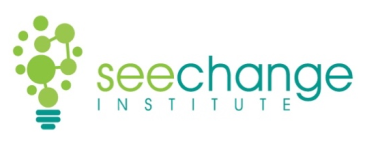Peninsula Clean Energy (funded by Calpine Energy Solutions)
Informing Electrification Programs with Research and Customer Insights
The Challenge
As California works toward carbon neutrality, widespread home electrification is essential. Achieving this transition, however, requires overcoming significant behavioral and structural barriers. The extensive research already conducted on this topic is spread across journals, conferences, and even within the datasets of utilities and government agencies themselves. Leveraging the broad and disparate literature on electrification along with customer insights has great potential to inform program design and improve outcomes.
The Client
Peninsula Clean Energy (PCE) is a community choice aggregator (CCA) who recognized this challenge and, as a result, sought to develop a comprehensive customer experience strategy and brand ecosystem that would make home electrification easier and more affordable. They plan to launch several new electrification programs, including installation services, rebates, incentives, financing, and a one-stop shop for tools and resources.
PCE reached out to See Change to lay the groundwork for their customer strategy and help ensure that their electrification programs would meet the needs of local residents. The goal of this research was to identify and address the pain points and motivations of customers while ensuring equitable access to new technologies. Financial support for this work was provided by Calpine Energy Solutions, which provides billing and customer service for PCE.
Our Approach
To help PCE design and implement effective electrification programs, See Change engaged in two research tasks:
- Literature Review on Home Electrification. See Change conducted a comprehensive review of existing research to identify key barriers, motivations, and opportunities related to home electrification. This included exploring the customer journey, the role of middle actors (such as contractors and tradespeople), and the policy context shaping uptake. The resulting literature review identified actionable insights for PCE to integrate into their program design.
- Customer Insights Analysis. See Change also analyzed PCE’s existing customer data, reviewing and coding 175 data files to gain insights into customers’ knowledge, attitudes, and behaviors related to electrification. The goal was to understand the specific barriers faced by PCE customers and how those barriers could be addressed through targeted interventions.
Key Findings
From the literature review and customer insights analysis, we identified several critical themes:
- Barriers along the Customer Journey. There are significant barriers at each stage of the electrification process, from initial awareness and education to adoption and post-installation. Customers need clear, accessible information and simplified processes to make decisions.
- Importance of Middle Actors. Contractors, installers, and salespeople are key influencers in the electrification process. Their knowledge, behavior, and incentives can either support or hinder customer adoption of new technologies.
- Influence of Policy Context on Customers. State and local policies play a significant role in shaping customer behavior. Existing incentives, financing options, and regulations impact the ease of electrification, so there is a need for policy clarity and streamlined processes to increase adoption.
- PCE Customer Needs and Behaviors. PCE’s customer base shows a mix of attitudes toward electrification, with some individuals highly motivated and others facing significant barriers, such as cost and confusion about available resources. The insights from the data analysis provided specific recommendations on how to meet customers where they are in their journey.
The Outcome
Based on these findings, See Change delivered a report to PCE with findings and recommendations to help them design customer-centric programs and remove barriers to electrification. With these foundational insights, PCE was better equipped to launch and scale electrification initiatives, ensuring that the programs are both effective and equitable.
We were also able to develop a public-facing version of the literature review to support other electrification program designers throughout the country and world (linked below).
Intrigued? Let’s chat!
